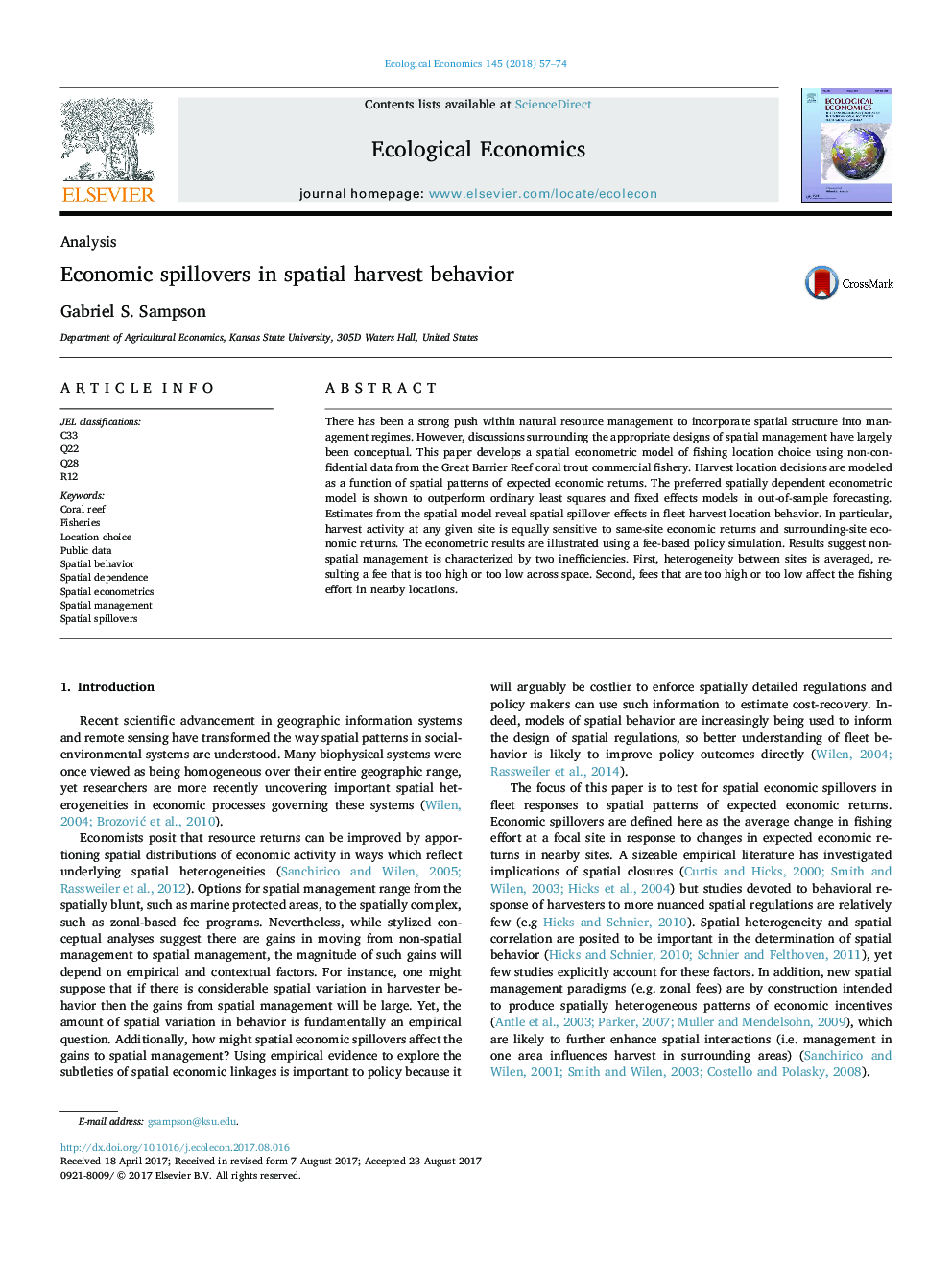| Article ID | Journal | Published Year | Pages | File Type |
|---|---|---|---|---|
| 5048595 | Ecological Economics | 2018 | 18 Pages |
â¢A spatial econometric model of harvest location in a reef fishery is presented.â¢Spatial dependence and autocorrelation is a major issue in location decisions.â¢The spatial econometric model is shown to outperform ordinary least squares in out-of-sample forecasting.â¢Harvest location is equally sensitive to changes in same-site and surrounding-site economic returns.â¢Policy implications of the econometric model are illustrated using a fee-based simulation.
There has been a strong push within natural resource management to incorporate spatial structure into management regimes. However, discussions surrounding the appropriate designs of spatial management have largely been conceptual. This paper develops a spatial econometric model of fishing location choice using non-confidential data from the Great Barrier Reef coral trout commercial fishery. Harvest location decisions are modeled as a function of spatial patterns of expected economic returns. The preferred spatially dependent econometric model is shown to outperform ordinary least squares and fixed effects models in out-of-sample forecasting. Estimates from the spatial model reveal spatial spillover effects in fleet harvest location behavior. In particular, harvest activity at any given site is equally sensitive to same-site economic returns and surrounding-site economic returns. The econometric results are illustrated using a fee-based policy simulation. Results suggest non-spatial management is characterized by two inefficiencies. First, heterogeneity between sites is averaged, resulting a fee that is too high or too low across space. Second, fees that are too high or too low affect the fishing effort in nearby locations.
